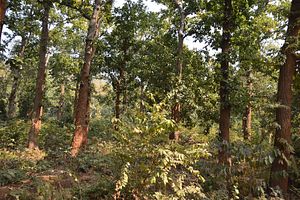It was probably my fourth visit to the tribal belt in south Odisha — an Indian state along the country’s eastern coast — when I was talking to the locals about their sacred cave up in the hills, of which we could see a glimpse from where we were standing. The young man I was talking to, said, “Not everyone is allowed to go up there. It is sacred.”
When I asked who isn’t allowed, he responded, “Non-tribal people, menstruating women, and Dalits.”
It struck me as an odd response, because from the information I had gathered during my previous visits, menstruation did not seem to be a taboo with the tribal people. But even more striking was the underlining of Dalits (the lowest in caste hierarchy in India), when non-tribal was already mentioned. It launched my search into the tensions between these two communities, both minorities in India and both exploited in the caste conscious mainstream. I wondered why these marginalized groups would be antagonistic to each other. The revelations from the past five years expose the systematic exploitation of these communities, starting from colonial times under the British colonial occupation.
A huge population of Dalits in the tribal majority area of Rayagada, the southernmost district of Odisha, do not belong to Odisha at all. About a hundred years ago, the British brought them from Agra, the city that is host to the well-known Taj Mahal, in the present day state of Uttar Pradesh. They were brought with the sole purpose of snitching on the anti-colonial local people (freedom fighters, as they were known in India) and to know what was going on in the forests (particularly if the freedom fighters were conspiring there), since they were almost inaccessible to the outsiders back then.
Extremely poor and left even without their traditional jobs, while living on the few pennies thrown by the British, these Dalits were asked to assimilate with the tribal, or adivasi, population. According to local tradition in this part of Odisha, if a poor family approaches a village for help, they are given a place to live, provided ration until they can fend for themselves, and given a little piece of land to start growing their own food. That is why, even now, one would find Dalit settlements right next to Kondh or the Dongria Kondh villages. But the non-tribal communities cannot own the land of tribal people on papers; hence they have no legal rights.
After the British left, the Dalits were left to fend for themselves. This started a cycle of worldly Odiya language-proficient Dalits exploiting the tribal people in turn. They would promise their tribal neighbors (who speak in the Kui language) to sell their produce in the market and quote a price. In the tradition of local Kondh tribe, if you have struck a deal with someone — usually formalized by gently striking the other person’s shoulders — you stick by it, even if someone quotes you a better deal.
The Dalit would then ask the neighbor to bring the farm produce, which may weigh tens of kilograms, to the market, and give them a fraction of the rate at which they would eventually sell. This has been going on for a long time and happens even now. Towns have since come much closer to some villages and the tribes have come to know that they were being cheated and now deeply resent the Dalits.
According to local nongovernmental organization (NGO) workers and anthropologists working in the area, there are also cases where the Dalits have cheated the tribal people of their land in lieu of alcohol. Over a period of time, many Dalits in the area have become owners of local breweries and water holes. Alcohol is considered a huge weakness for tribal men. According to an eyewitness, the Dalit owner of the local brewery would let tribal men keep drinking at his place on credit. These men usually don’t keep tabs. Suddenly one day, the owner would announce that the debt is now too large and ask for a certain piece of land as collateral. With money exchanged under the table with the local administration, the land would belong to the Dalit for all practical purposes — even if not legally.
The tensions between these communities are today becoming more and more apparent, resulting in a situation where the tribal population in Odisha treats Dalits exactly the way the Hindu upper castes do: as untouchables.
The most disturbing finding, however, has been how the life of a Dalit from Agra has come to full circle in this area. One person, who had been actively involved during the protests against the corporate giant Vedanta’s mining expedition in the Niyamgiri hills, narrates:
We used to go to villages deep inside the forests almost in the middle of the night to mobilise people to come out and protest. While we would return around 6 a.m., we would find posters with our names already pasted in the town. This would baffle us. How would anyone that early in the morning know that we were up in the forest? When we gathered information, it turned out to be the Dalit neighbours living next to the tribal households snitching on us for the company.
From colonial oppressors to the corporate giants, the exploited continue to be played against each other, while the powerful reap the benefits.

































